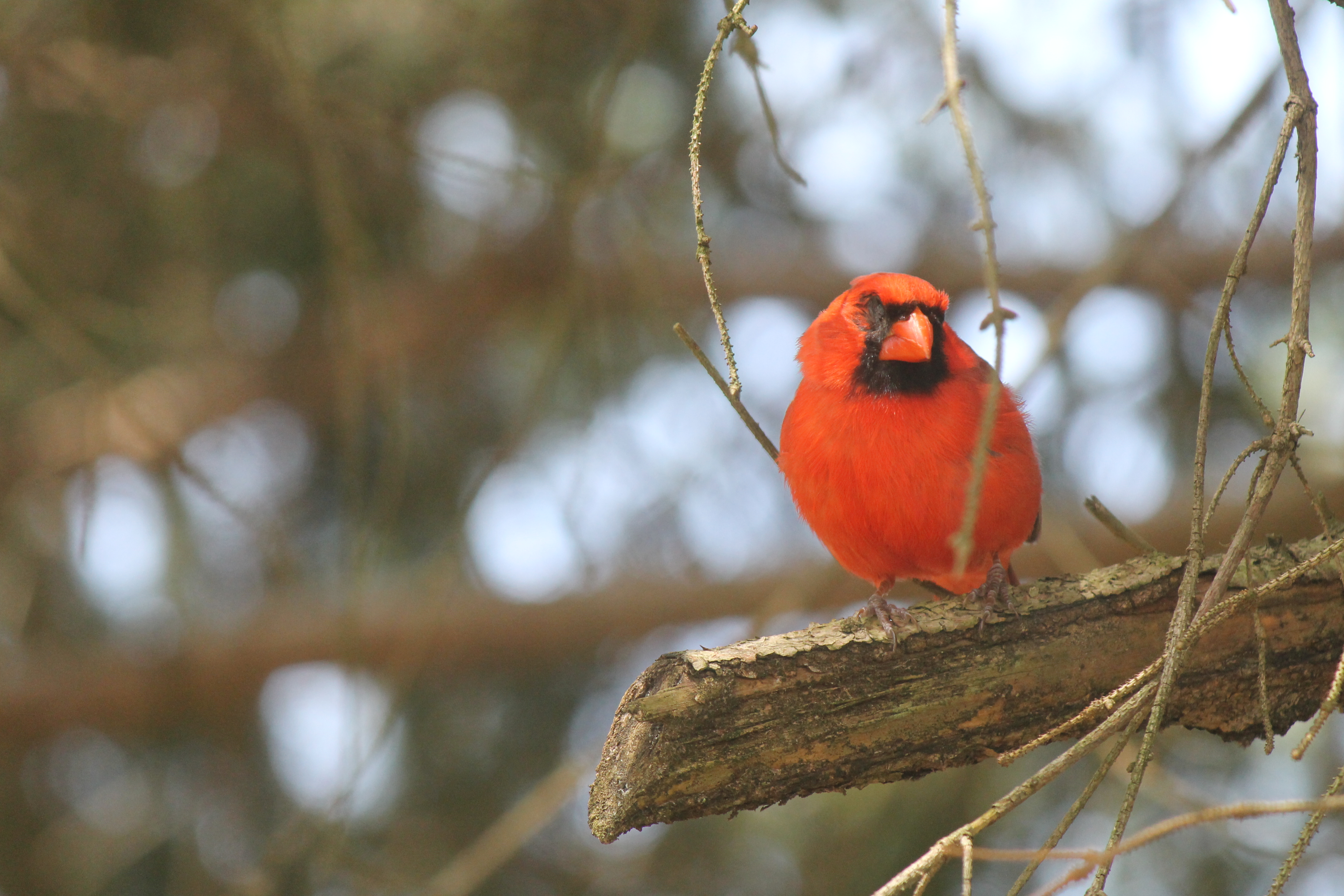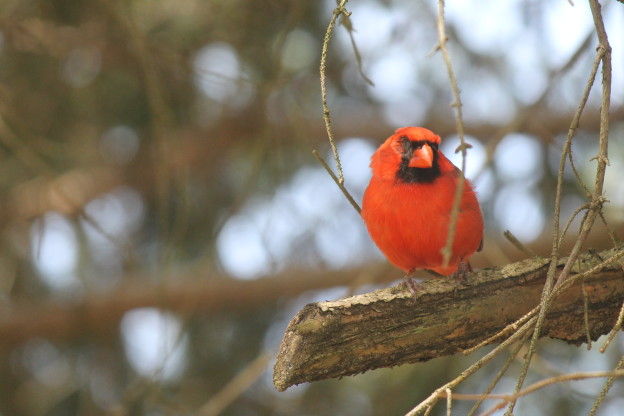 This is the House Finch that flew to my feet.
This is the House Finch that flew to my feet.
 This beautiful Cardinal was just outside my window a few months later. He has no eye.
This beautiful Cardinal was just outside my window a few months later. He has no eye.
Both birds appear to be affected by the same disease. Read on to see how you can help.
Not long after we moved to Tennessee and while working in my garden last spring, I noticed a bird very close to me on the ground. It was so close that I attempted to pick it up and each time I reached out it hopped just beyond my grasp. It seemed to need something from me, as if to say, Can I trust you? Can you help me? There was something odd about the little finch. It’s feathers looked ruffled and unkempt. Each time I got closer I was able to get a better look. The finch appeared to have no eyes. One eye was completely crusted over and the other wasn’t far behind. After hanging close by for awhile, the little bird up and flew away. That evening I learned that this little finch was more than likely affected by House Finch Eye Disease. This disease is highly contagious among feeder-birds. The first sighting was a House Finch in Washington DC in 1994. The disease is said to spread at an alarming rate across the country affecting not only House Finches but also Purple Finches, Gold Finches, Gross Beaks, Cardinals and several others species of feeder-birds.
Similar to Conjunctivitis in Humans, House Finch Eye Disease is otherwise known as Mycoplasmal Conjunctivitis. Affected birds develop weepy. crusty eyes which in severe cases can cause blindness and death. The organization, Feederwatch, has encouraged bird feeders and watchers across the country to report any sightings of birds that appear to be affected by the disease. If you are a bird lover you can do your part by helping in just two ways.
- Clean your feeders. Mix 90% water with 10% Clorox. Spray your feeder well with solution or submerge the perches and feeder opening until covered. Be sure to rinse the feeder well to avoid Chlorine toxicity to the birds. This should be done every week or two. Dispose of old or moldy feed and feeders. Keep seed in a clean dry place.
- If you see a bird that appears to be affected, contact http://feederwatch.org. Look for the link “Project Feederwatch”. Here you can also get involved with counting specific birds at your feeder, as well as reporting diseased birds. By doing so you help scientists learn more about how and where the disease is spreading, and which birds visit which regions and when.
- If you are a bird watcher, particularly a feeder, it’s equally important that you periodically, perhaps monthly, report on the Feederwatch website when you DON’T see any affected birds. This is important so that they will be able to calculate the percentages of the spread of the disease and the regions in which it is a problem. Researchers need all information. The good and the bad. So get your binoculars ready, watch your feeders and report your findings.
Bird lovers are awesome! Thank you for doing your part.
Please pass this along to help spread awareness of this topic.
Kim Brewer-Bettencourt
The Happy Cardinal
*information in this article was obtained by Feederwatch.org

